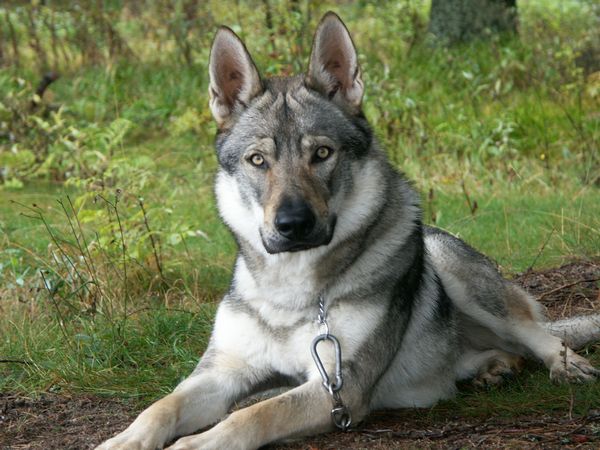Eurasian Grey Wolf Supremacism

A hybrid between a wolf and a German Shepherd
A recent study has revealed that there has been recurrent mating between dogs and wolves throughout Eurasia:
The international study showed that around 60 per cent of Eurasian grey wolf genomes carried small blocks of the DNA of domestic dogs, suggesting that wolves cross-bred with dogs in past generations.
The results suggest that wolf-dog hybridisation has been geographically widespread in Europe and Asia and has been occurring for centuries.
Researchers examined DNA data from grey wolves — the ancestors of the domestic dog — to determine how much their gene pool was diluted with the DNA of domestic canines, and how widespread the process of hybridisation is.
In other words, the researchers tried to find out how “impure” the Eurasian Grey Wolf has become due to introgression of domestic canine genes.
The researchers discovered that many grey wolves are in fact genetically-impure and that even coming up with a definition for a “pure” grey wolf is problematic as a result. They emphasize however that the presence of some dog genes does not make wolf populations any less genetically-distinguishable and that conservation efforts to maintain wolf populations’ integrity and genetic purity remain meaningful:
We found that while hybridisation has not compromised the genetic distinctiveness of wolf populations, a large number of wild wolves in Eurasia carry a small proportion of gene variants derived from dogs, leading to the ambiguity of how we define genetically “pure wolves”.
Our research highlighted that some individual wolves which had been identified as “pure wolves” according to their physical characteristics were actually shown to be of mixed ancestry. On the other hand, two Italian wolves with an unusual, black coat colour did not show any genetic signatures of hybridisation, except for carrying a dog-derived variant of a gene linked to dark colouration. This suggests that the definition of genetically “pure” wolves can be ambiguous and identifying admixed individuals can be difficult, implying that management strategies based on removal of suspected hybrids from wolf populations may be inefficient.
Instead, our study has highlighted a need to reduce the factors which can cause hybridisation, such as abundance of free-ranging dogs, small wolf population sizes, and unregulated hunting.
Dogs and wolves are thought to have split into separate evolutionary paths between 14,000 and 6,400 years ago, another example of rapid biological evolution over a relatively small number of generations, albeit under human impetus.
One wonders what the authors think about efforts to preserve the integrity of human subspecies, a precious inheritance which has emerged through tens of thousands of years of regional evolution.
Certainly, in the case of wolves and dogs, the composition of the gene pool is never considered a matter of indifference. If the wolf gene pool were overwhelmed through interbreeding with dogs, the species would go extinct.
The presence of wolf genes in canine pets is also something which cannot be ignored, even if dogs and wolves share over 99.8% of their DNA. That 0.2% genetic difference makes for an enormous phenotypic difference. The authorities generally advise against or outright ban the ownership of wolf-dog hybrids as pets. Wolf-dogs tend to be more shy and aggressive, although the temperament of a particular individual is more difficult to predict than for either wolves or pure-bred dogs. Because of their genetic diversity, wolf-dogs have more temperamental diversity and there is no telling what particular set of wolf/dog genes a particular wolf-dog has inherited from its parents. One dog writer noted:
Legal or not, wolfdogs pose significant behavioral challenges for owners . . . Like Pit Bulls and pornography, wolfdogs can be tough to identify, regardless of laws passed to limit them. . . . Of course, not all wolfdogs behave the same way, and there’s probably more variety in behavior among wolfdogs than any other kind of dog.
Species and subspecies tend to be fuzzy around the edges, but that does not make them any less real. Small genetic differences, even of a few percentiles of a percentile, can lead to enormous phenotypic differences (which, as E. O. Wilson has pointed out in Sociobiology, can in turn be magnified into even great social and cultural differences). All this is as true for humans as for canines or any other animal.





Comments are closed.